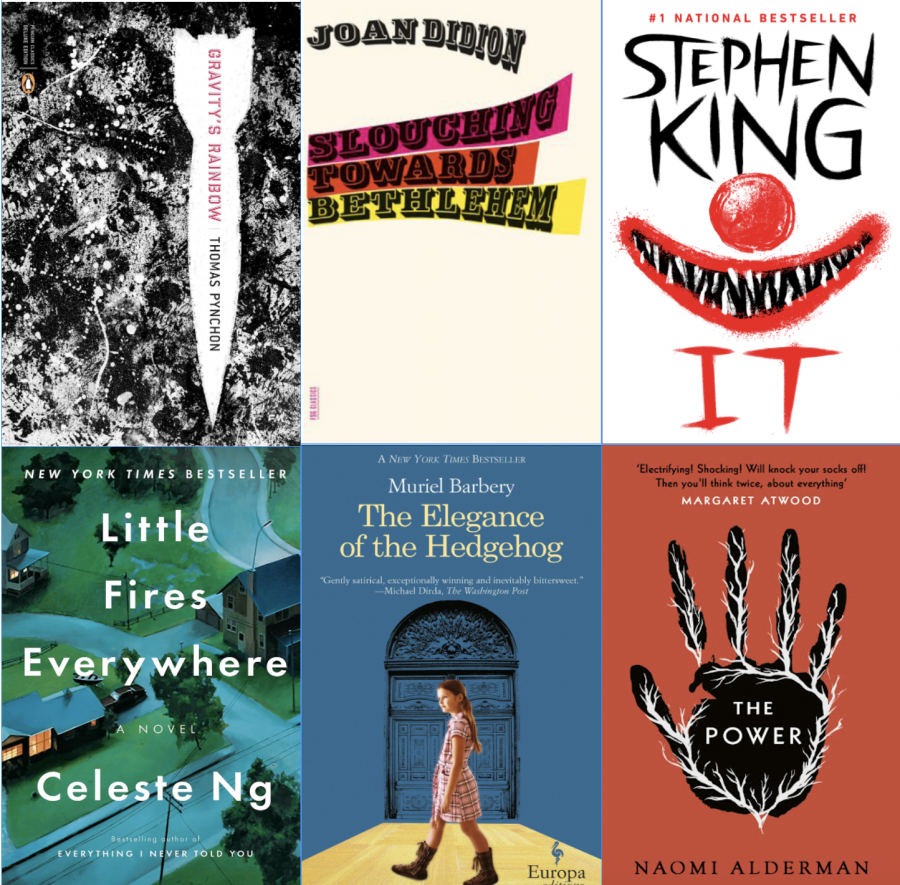Midway recommends: 6 books
Midway staff members recommend a collection of books they have read — from horror to essays to historical fiction.
The winter season is a perfect time to curl up with a good book. These are the Midways most recommended.
December 11, 2020
“Little Fires Everywhere” by Celeste Ng
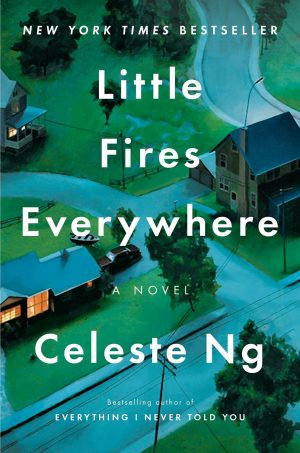
Following the burning of the Richardson family’s home, Celeste Ng’s “Little Fires Everywhere” outlines the events that would lead to discovering the culprit. From manicured lawns to picturesque houses, everything in Shaker Heights, Ohio, follows a structure. The town is perfect for Elena Richardson, who has based her life and family around rules. However, when artist Mia Warren and her daughter Pearl move to Shaker Heights and become Elena’s tenants, Pearl becomes attached to the Richardsons’ life.
From here, the book explores the lives of the two very different families. Their interactions lead to secrets being uncovered and conflicts in a mother-daughter relationship. The book also unravels the story behind Mirabelle McCoullagh, an adopted child, and her birth mother Bebe Chow. These stories all connect to give the reader a complex view of identity and motherhood. Readers will sympathize with the characters and immerse themselves in a narrative that will always have them wondering what happens next. The book was the basis for a miniseries on Hulu earlier this year.
— Adrianna Nehme
“Gravity’s Rainbow” by Thomas Pynchon
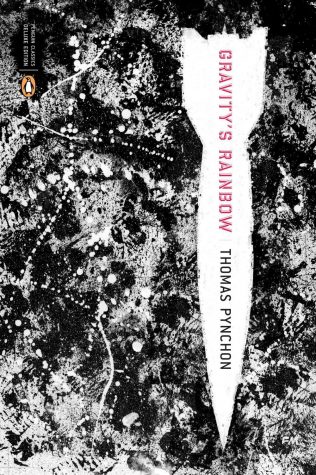
While it’s known as a slightly dense 20th century classic, Thomas Pynchon’s “Gravity’s Rainbow” manages at many different levels to be thought-provoking, funny and simply a good story. The book takes place during the final months of World War II with a vast range of characters mainly centered around London. The various narrative threads center around V-2 rockets and their targets with many digressions along the way. The perpetual bombings of London lead to an omnipresent fear of sudden death, but brief moments of love and intimacy counter the atmosphere of mortal terror as Pynchon covers the jealousies and romances that provide distraction from the catastrophe.
Themes of determinism and probability become salient after it is discovered that Lt. Tyrone Slothrop’s sexual encounters mysteriously predict the next bombing targets around London, and occultic séances, Pavlovian dogs and dueling scientists ensue. While it can be dense, it is also comical, shocking, tragic, beautiful and grand.
— Ryan Clark
“The Elegance of the Hedgehog” by Muriel Barbery

Based in Paris in 2005, Muriel Barbery’s stimulating and counter-intuitive “The Elegance of the Hedgehog” is narrated by two protagonists with profound views on life that draw readers in. The entire story takes place in an apartment building, where the concierge, 54-year-old Renée, is depicted to be an intelligent woman who hides her intellect because she believes it isn’t proper for a concierge to be anything more than simply a concierge. Her life is rather dull, but she uses books and films as a way to make her days more exciting.
Paloma, a 12-year-old girl who lives in the same building, is depicted as someone extremely intelligent as well. However, she’s decided to commit suicide at the age of 13, as she believes that life is pointless and everyone around her is desperate to fit into the pointless standards of society. When the new resident Kakuro Ozu acquaints himself with Renée and Paloma, things begin to take a turn, and the girls start to gain a new sense of perspective from the older and wiser man.
While the story definitely isn’t an easy read, the delicate storytelling and dense ideas presented compel readers to try and understand the characters from the beginning to the end of the novel.
— Krishita Dutta
“The Power” by Naomi Alderman):
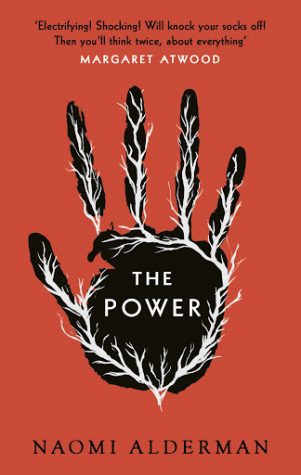
All women suddenly have the power to command electricity. Sounds like an awesome plot for a girl-power fantasy novel, right? Naomi Alderman’s “The Power” takes this concept in a darker, dystopian direction — how would our world react to this new dangerous ability? The story follows Tunde, a rising reporter; Margot, a politician devoted to protecting her daughters; Allie, an abused foster kid turned cult leader; and Roxy, an electrical powerhouse with equally powerful ties to the London mob.
The sci-fi element of the story takes a back seat as readers watch the rotating cast of morally ambiguous characters vie for power as the world as we know it is completely overturned. The story is framed as a historical novel written from a distant future in which the Apple logo is misinterpreted as a religious motif and the idea of male gangs in the past is seen as “saucy” yet unlikely. The patriarchy has been nearly wiped from memory and become a matriarchy. “The Power” is overall a fascinating read, worth picking up for Alderman’s dark insights into the relationship between power and humanity. A quick content warning for those interested: ‘The Power” contains scenes with rape, suicide and violence.
— Caroline Hohner
“Slouching Towards Bethlehem” by Joan Didion
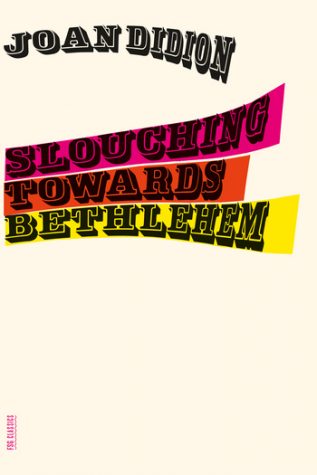
I was given Joan Didion’s “Slouching Towards Bethlehem,” her first published collection of essays, at the end of my sophomore year in June 2019 and spent that summer poring over it to no end. I revisit it every few months, and my copy has made its way through friends and siblings. It’s full of margin notes and dog-eared pages indicating the essays I think they’d like best.
“Slouching Towards Bethlehem” is colorful, observational, and a time capsule of the culture (and counterculture) of California in the late ‘60s and ‘70s, defining the aesthetic replicated in Quentin Tarantino’s “Once Upon a Time in Hollywood.” The book is divided into three parts: “Life Styles in the Golden Land,” in which Didion writes portraits of everyone from Hollywood executives to folk-icon Joan Baez, “Personals” and “Seven Places of the Mind.” The titular essay stands out as a haunting-yet-beautiful look at the community of runaways and hippies living in the Haight-Ashbury district of San Francisco in 1967. Didion’s fly-on-the-wall style of writing gives her the unique ability to be immersed in the environment she’s writing about while still bringing a removed, outsider look, allowing the reader to do the same.
— Caledonia Abbey
“It” by Stephen King (Audiobook)
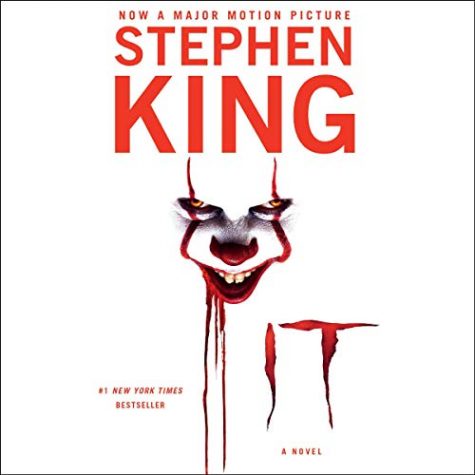
Fear itself lives in Derry, Maine, and it comes in many different forms every 27 years. Audible presents Steven King’s “It” narrated by Steven Weber. This horrifying story follows a group of friends and their encounter with a strange being that will haunt them into their adulthood. Derry had always been a rather strange town, full of disappearances and unsolved crimes. After the disappearance of his brother, Bill Denbrough gathers a group of friends to find him. Instead they find something they never cared to discover.
Reading the book is frightening enough, yet when read to you, the story becomes even more terrifying. For those who don’t find reading the most interesting or those who get bored of flipping through pages should look no further. “It,” a masterpiece of horror literature, is a bone-chilling experience that makes you desperate to click play.
— Julian Ingersoll




















































